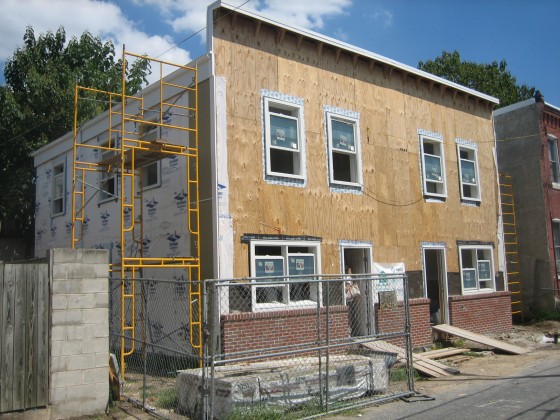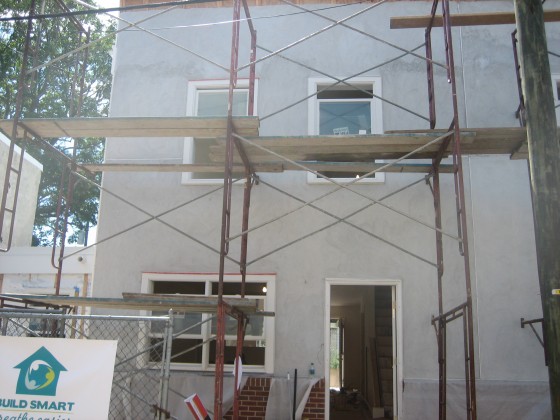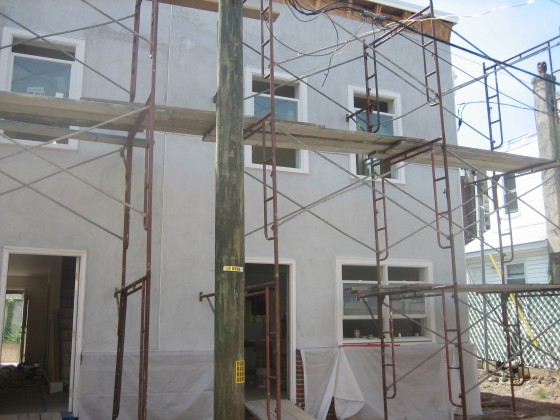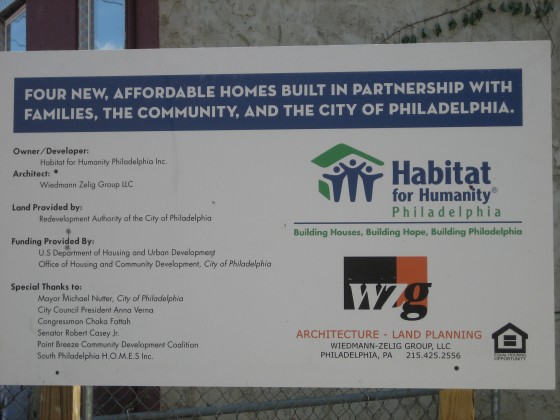On the 2200 block of Latona St. in Point Breeze, Habitat for Humanity is currently constructing four houses from the ground up, all of which will be handicap accessible and “affordable.” Habitat’s model for constructing and selling affordable housing is somewhat unique; they require new home buyers to provide “sweat equity” by working 350 hours for Habitat, often on their own homes. In addition, the qualification process is extremely stringent, requiring applicants to clearly display a need for housing, an ability to pay, and a willingness to partner in order to qualify, for a “hand up, not a hand out.” Habitat provides interest-free mortgages, adding to the affordability of the homes.
At least one of the houses has already matched with a family that already lives in the neighborhood. This 1800 sqft., 4 bedroom house has been built extra-wide, with a first-floor bedroom and bathroom to accommodate a wheelchair-bound teenager. This house will be complete by Thanksgiving, with the house next door finished soon afterward. The houses on the north side of the street will be ready in January. Over the months of construction, between 600 and 800 volunteers will have helped out at the site. All of the houses are being built with special attention to indoor air quality, as some of the funding for this development came from a Merck asthma program, although none of the houses will have central air.
It’s clear that Habitat for Humanity does very good and important work, not only changing the lives of their home owners, but providing volunteers with opportunities to help those in need. Habitat has built about 155 homes in Philadelphia in the past twenty-five years, and we hope they build twice as many in the next twenty-five. But…
Isn’t there always a but?
These four houses have been constructed on seven lots that were acquired from the RDA for a nominal price. Our complaint here isn’t that the group of lots could have been sold to private developers for at least $350,000- our problem is the number of houses Habitat has built relative to the number of lots. For the accessible home with the first floor bedroom to be double wide makes perfect sense. But the other three homes aren’t double wide and could have easily been built on their individual lots. Look again at this image from the top of the page:
Instead of building these new houses in a way that conforms with all the other housing stock on the block, Habitat centered their houses on their lots, creating little side-yards. One could certainly argue that these yards do provide some value with added light and air, but wouldn’t two more houses have provided a little more value? We heard how difficult it is to acquire land in Philadelphia from two sources at Habitat- why wouldn’t they have maximized their use of this precious land?
And can you guess who their neighborhood partner is, who unquestionably was integral to the acquisition of the land and almost definitely gave their approval for the design?





Leave a Reply